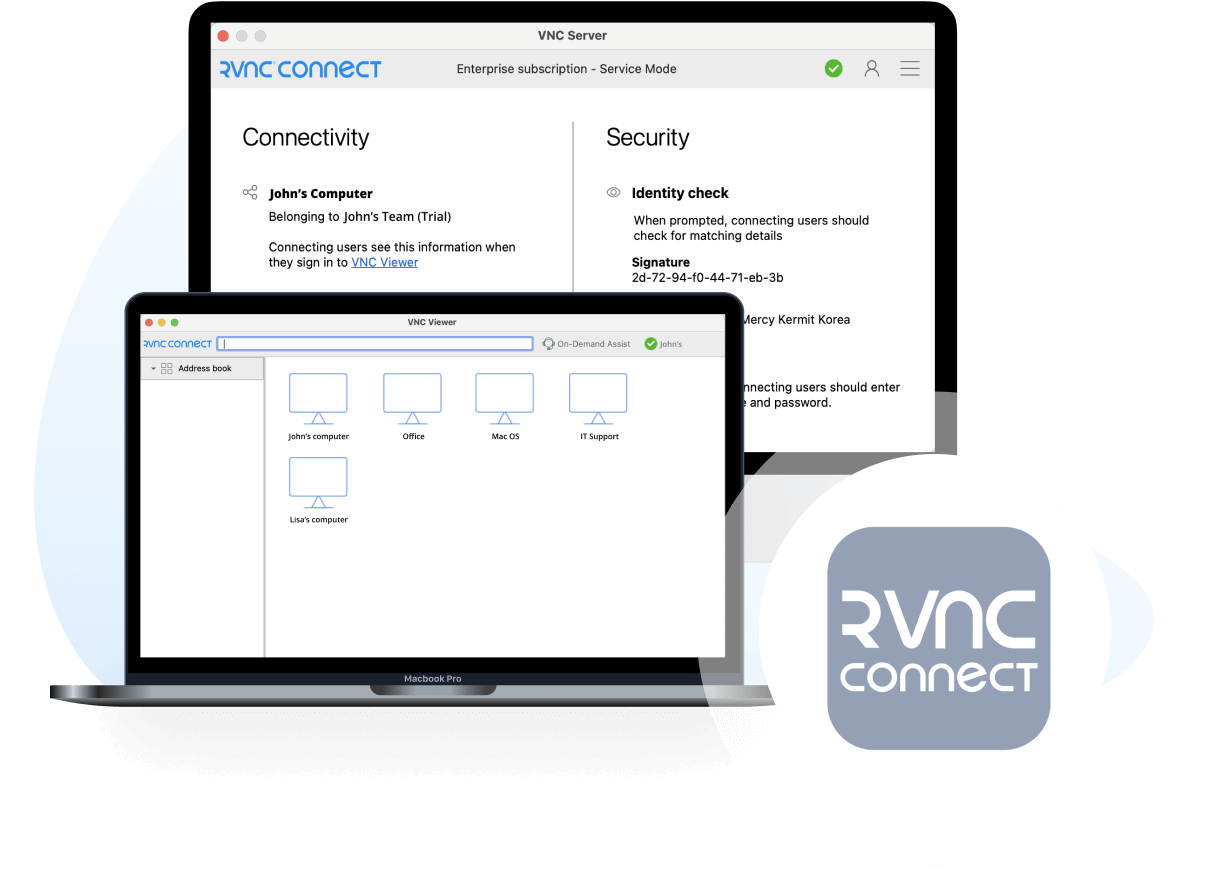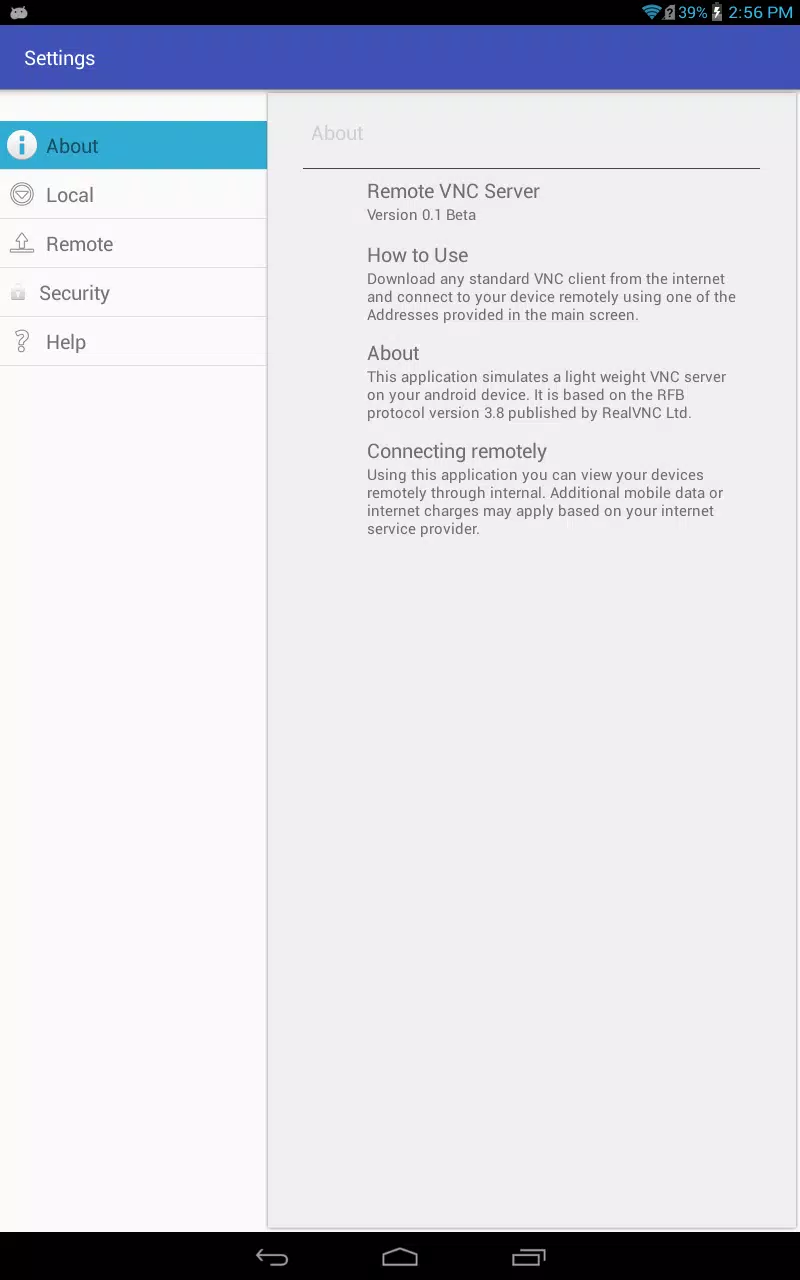Ever wished you could be in two places at once, effortlessly managing your devices from afar? The convergence of the Internet of Things (IoT) and Virtual Network Computing (VNC) is not just a technological advancement; it's a paradigm shift in how we interact with and control our digital world. This powerful combination is reshaping industries, empowering individuals, and opening up new possibilities for remote access and management.
Imagine a world where you can monitor your home security system from a remote island, troubleshoot a malfunctioning industrial machine from your office, or access your personal files from any device, anywhere. This is the promise of IoT and VNC working in tandem. IoT provides the "things"the connected devices that gather data, perform actions, and communicate with each other. VNC provides the "eyes and hands"the remote access technology that allows you to interact with these devices as if you were physically present. Together, they create a seamless and intuitive experience for remote management and control.
| Component | Description | Functionality |
|---|---|---|
| IoT Devices | Physical devices with embedded sensors, actuators, and connectivity capabilities. | Data collection, environmental monitoring, remote control of physical processes. |
| VNC Server | Software installed on the IoT device that enables remote access to its graphical interface. | Provides a virtual desktop environment for remote users to interact with the device. |
| VNC Client | Software installed on the user's device (laptop, smartphone, tablet) to connect to the VNC server. | Displays the remote desktop and allows the user to control the IoT device. |
| Network Connection | The communication channel between the IoT device and the user's device (e.g., Internet, LAN). | Enables the transmission of data and control signals between the VNC server and client. |
| Security Protocols | Encryption and authentication mechanisms to protect the remote connection and data. | Ensures secure access to the IoT device and prevents unauthorized control. |
| Example Use case | Consider Smart Home. | A user can remotely access a security camera via a smart phone. From the smart phone the user can monitor the environment, switch on alarm, and use all other features of the camera. |
Reference: RealVNC Website
- Jonny Harris Kaitlin Kozell Love Career Life What You Need To Know
- Unlock Iot Devices Secure Remote Access Management Guide
Let's delve deeper into the mechanics of this powerful partnership. VNC, or Virtual Network Computing, is a system that allows you to use your keyboard and mouse to interact with a graphical desktop environment on a remote server or, in this case, an IoT device. It essentially mirrors the screen of the remote device onto your local device, allowing you to control it as if you were sitting right in front of it. This is particularly useful for managing files, software, and settings on a remote server or IoT device, especially for users who are not yet comfortable with the command line.
The VNC architecture follows a client-server model. The VNC server runs on the IoT device you want to control, while the VNC client runs on your laptop, PC, smartphone, or tablet the device you're using to access the IoT device remotely. The VNC server listens on a specific TCP port, typically 5901 by default, waiting for incoming connections from VNC clients. Once a connection is established, the client displays the graphical interface of the server, allowing you to interact with the IoT device in real-time.
One of the most popular applications of VNC in the IoT space is remote access to Raspberry Pi devices. Raspberry Pi, a small and affordable single-board computer, is a favorite among hobbyists, developers, and researchers for building a wide range of IoT projects. With VNC, you can remotely access the Raspberry Pi's desktop environment, making it easier to manage and control your IoT projects from anywhere in the world. To install a VNC server on a Raspberry Pi, you can use software like TightVNC Server. This involves opening a terminal on your Raspberry Pi and running a couple of commands to install the software. Once installed, you can configure the VNC server to start automatically on boot, ensuring that you can always access your Raspberry Pi remotely.
- Somali Wasmo Channels Groups Find What Youre Looking For Now
- Kash Patels Divorce Affairs The Untold Story Wife Facts
Another example is the Jetson Nano, a powerful AI computer designed for edge computing applications. Finding the IP address of your Jetson Nano is crucial for establishing a VNC connection. You can achieve this by opening a terminal on the Jetson Nano and running the command "ifconfig." This will display a list of network interfaces and their corresponding IP addresses. Note down the IP address assigned to your Jetson Nano, as you will need it to connect to it using a VNC client.
It's important to understand the difference between VNC and Remote Desktop Protocol (RDP). While both are remote desktop solutions, they have significant differences. Windows RDP is a proprietary software designed and optimized for connecting Windows devices. VNC, on the other hand, is a more versatile and platform-independent solution that can be used with various operating systems, including Windows, macOS, Linux, and even embedded systems like Raspberry Pi and Jetson Nano. Furthermore, RDP generally offers better performance than VNC, especially over high-latency connections. However, VNC is often preferred for its simplicity, ease of use, and wider compatibility with different devices and platforms.
The convergence of IoT and VNC is revolutionizing various industries. In manufacturing, VNC enables remote monitoring and control of industrial machines, allowing engineers to troubleshoot problems and optimize performance from anywhere in the world. In healthcare, VNC allows doctors to remotely access patient data and medical devices, improving patient care and reducing costs. In agriculture, VNC enables farmers to remotely monitor crop conditions and control irrigation systems, optimizing yields and conserving resources. In smart homes, VNC allows homeowners to remotely control their security systems, appliances, and lighting, enhancing security and convenience.
VNC Connect is a widely used remote access software that's available for both personal and commercial use. It consists of a VNC Server app, which needs to be licensed for the computer you intend to control, and a VNC Viewer app, which you can download freely to all the devices you want to control from. This dual-app system allows for a secure and streamlined remote access experience.
When setting up a VNC server on an IoT device, security should be a top priority. VNC connections are vulnerable to eavesdropping and unauthorized access if not properly secured. To mitigate these risks, it is essential to use strong passwords, enable encryption, and implement other security measures, such as two-factor authentication. You can also consider using a VPN (Virtual Private Network) to encrypt the entire network traffic between the VNC client and server, providing an extra layer of security.
Looking ahead, the integration of IoT and VNC is expected to become even more prevalent, driven by the increasing adoption of IoT devices and the growing demand for remote access and management solutions. As IoT devices become more sophisticated and powerful, VNC will play an increasingly important role in enabling users to interact with these devices in intuitive and efficient ways. Furthermore, advancements in networking technologies, such as 5G and Wi-Fi 6, will enable faster and more reliable VNC connections, further enhancing the user experience.
One potential area of growth is the use of VNC in edge computing. Edge computing involves processing data closer to the source, reducing latency and improving performance. By running VNC servers on edge devices, users can remotely access and manage these devices without having to rely on cloud-based solutions. This is particularly useful for applications that require real-time processing and low latency, such as autonomous vehicles, robotics, and industrial automation.
Another promising area is the integration of VNC with augmented reality (AR) and virtual reality (VR) technologies. Imagine being able to remotely access an IoT device and view its data in an AR or VR environment. This would provide a more immersive and intuitive experience, allowing users to better understand and interact with the device. For example, a technician could use AR glasses to remotely diagnose a malfunctioning machine and receive step-by-step instructions on how to repair it, all while viewing the machine in real-time.
However, there are also challenges associated with the integration of IoT and VNC. One challenge is the limited processing power and memory of some IoT devices. Running a VNC server can be resource-intensive, potentially impacting the performance of the IoT device. To address this challenge, it is important to optimize the VNC server software and use efficient compression algorithms to reduce the amount of data transmitted over the network. Another challenge is the lack of standardization in the IoT ecosystem. Different IoT devices use different protocols and data formats, making it difficult to integrate them with VNC. To address this challenge, it is important to adopt open standards and develop interoperable solutions.
Despite these challenges, the future of IoT and VNC is bright. As technology continues to evolve, we can expect to see even more innovative applications of this powerful combination. From smart homes to smart cities, from manufacturing to healthcare, IoT and VNC are transforming the way we live and work. By embracing these technologies and addressing the challenges associated with them, we can unlock their full potential and create a more connected, efficient, and intelligent world.
In conclusion, the fusion of IoT and VNC is a game-changer, providing unprecedented control and accessibility to connected devices. As the IoT landscape expands, VNC will continue to be an essential tool for managing and interacting with these devices, empowering users to harness the full potential of the Internet of Things.
To further explore the practical applications of VNC within IoT, consider the scenario of remotely connecting to a Raspberry Pi. Virtual Network Computing (VNC) offers a connection system that empowers you to interact with a graphical desktop environment on a remote server using your keyboard and mouse. For those less familiar with command-line interfaces, VNC simplifies managing files, software, and settings on a remote server.
Adopting a client-server model, VNC operates with the VNC server running on the Raspberry Pi and the VNC client active on the users laptop or PC. By default, the VNC server listens on TCP port 5901, awaiting connections. You can install TightVNC Server on Raspberry Pi. Start by opening a terminal on your Raspberry Pi and executing two commands to install TightVNC Server. Once installed, you'll have the ability to access your Raspberry Pi remotely.
Similarly, when working with Jetson Nano, identifying its IP address is paramount. In the terminal, running the command ifconfig unveils the IP address assigned to your Jetson Nano. This address is necessary for establishing a connection.
It's crucial to acknowledge the distinctions between VNC and Remote Desktop Protocol (RDP), despite both being remote desktop solutions. Windows RDP, proprietary software, is tailored and optimized for connecting Windows devices. While remote access technology has reshaped interactions with devices globally, IoT combined with VNC presents a versatile avenue for remote control and management.



Detail Author:
- Name : Kirsten Rice
- Username : asia.homenick
- Email : rstoltenberg@yahoo.com
- Birthdate : 1993-05-07
- Address : 27657 Adams Falls Apt. 083 West Vernieview, WV 58557
- Phone : 1-385-672-7448
- Company : Kuhn and Sons
- Job : Professor
- Bio : Odit et explicabo mollitia. Dolore eos facilis necessitatibus et repellat. Maxime beatae quasi ex debitis qui molestias aperiam illo. Ut tenetur consequuntur velit eaque temporibus ipsam.
Socials
linkedin:
- url : https://linkedin.com/in/reynolds1994
- username : reynolds1994
- bio : Quo dignissimos quia et tenetur facere dolores.
- followers : 1524
- following : 2472
instagram:
- url : https://instagram.com/vickie_reynolds
- username : vickie_reynolds
- bio : Non officiis quo sunt numquam qui iure illum dolorem. Est aut velit expedita impedit nisi.
- followers : 4819
- following : 928